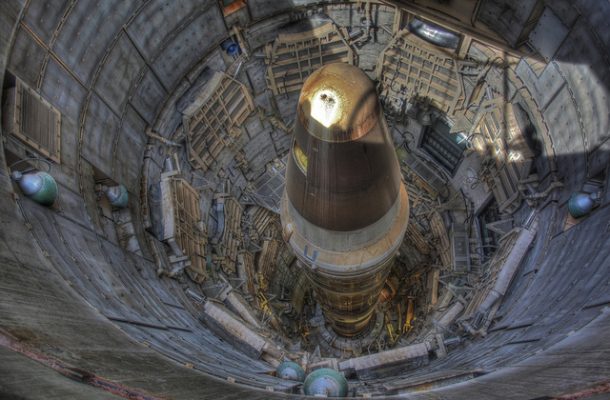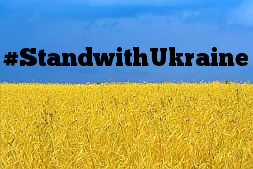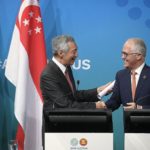In defence of nuclear deterrence

I read with interest the recent Strategist posts (here and here) written by my former colleague Andrew Davies, outlining his conversion to the anti-nuclear cause. Andrew’s views are always worth listening to, but on this occasion I’ll beg to differ with his conclusions.
Andrew, having read Daniel Ellsberg’s recent book on nuclear command and control, worries that we’re running an unacceptable risk of a nuclear war that occurs by accident. Moreover, he’s concerned that such an accident might well bring civilisation to an end.
He reinforces that point by his reference to the dark silence emanating from our cosmic neighbours, a silence consistent with a possibly similar tale of self-extermination by industrialised intelligent life elsewhere in the cosmos. And he draws his argument to a close with a brief look at Lewis Richardson’s statistics on the frequency of war, arguing that wars are ‘randomly distributed accidents’.
Let’s start with command and control. Yes, history contains some hairy moments—that’s been relatively well known for some time, and well rehearsed recently by Eric Schlosser, as well as Ellsberg. But experience is a learning curve, not just a litany of errors. We try to fix problems, and to design systems that are less susceptible to failure.
Over time, the nuclear- weapon states have learned to manage command and control problems somewhat better than they have done in the past. Weapon security has been improved through better locks on warheads, and weapon safety improved by better design, including use of insensitive high explosives.
Even attack assessment has been improved: as I understand it, two independent sources, relying on two different physical principles, are now required to verify that a nuclear attack on the US is underway. (Readers seeking a quick description of current US command and control arrangements might like to browse this overview of the latest Nuclear matters handbook.)
Let me say something too about the spectacular silence of our galactic neighbours. Frankly, I’m wary of blind speculation. As any science fiction fan knows, there are a host of reasons that might cause civilisations to end abruptly. (See, for example, Cixin Liu’s The three-body problem.)
Moreover, right here on earth, we have our own collection of ancient cities covered by jungle. Civilisations are fragile, impermanent things. History is not one long, slow trudge from darkness to enlightenment, but the rise and fall of a procession of complex societies.
Still, Andrew’s right that a large-scale nuclear war could constitute one form of civilisation-ending event. So, what should we be doing with our nuclear arsenals? For better or worse, nuclear weapons sit at the heart of the current international security order. Yes, only about 25% of states rely on nuclear weapons for their security.
But look further up the power ladder. All five of the permanent members of the UN Security Council are nuclear-weapon states. All of the G7 countries (Canada, France, Germany, Italy, Japan, the UK and the US) are either nuclear-weapon states or beneficiaries of extended nuclear deterrence. Of the G20, Argentina, Brazil, Indonesia, Mexico, Saudi Arabia, South Africa and the EU don’t rely on nuclear weapons (although some have flirted with the option in the past or do so today); the other 13 (roughly two-thirds) do.
Of the five BRICS countries, Brazil and South Africa are non-nuclear powers and Russia, China and India nuclear ones. In short, among the powerful, the protection afforded by nuclear deterrence is ‘normal’.
Now we’re approaching the key question: do nuclear weapons make a positive contribution to international security? Personally, I believe that nuclear weapons deter major war, and—moreover—encourage caution in policymaking.
Never having read Richardson’s statistical analysis, I’m not well placed to dispute Andrew’s summary of his conclusions. But his dataset ends in 1950, only five years after the birth of the atomic age, so he certainly isn’t testing nuclear deterrence.
I’m attracted too by the recent observations of Kori Schake in her review of Lawrence Freedman’s latest book that quantitative analyses of conflict aren’t especially helpful. Freedman and Schake argue that ‘interstate wars are both rare and their circumstances particular … In reality, each interstate war is utterly unique, thus n can never be greater than one.’
Indeed, since war is really about politics and societies, we should be wary of abstracting war from its context. In that regard, it’s important to remember the world before nuclear weapons. We have only one model of industrial-age warfare devoid of the sobering effects of nuclear weapons, and it was the one which prevailed between the American civil-war years and 1945.
With the industrial revolution, war’s centre of gravity moved away from the battlefield and towards national industrial capacity. Wars became uncapped contests in national endurance. People died in the tens of millions.
Nuclear weapons brought to an end that picture of warfare as a contest in industrial mass-production. In one sense, of course, they did so because they represented the zenith of the destruction-based model of war—and so inspired a set of mechanisms (such as the UN Security Council) and doctrines (such as deterrence) intended to help prevent war between the major powers.
Nuclear weapons helped force a possible hot war to become a cold one, and pushed warfare itself towards contests that would be limited in magnitude and duration.
That vision of nuclear weapons is often missing in today’s debates. Around the world, evidence mounts of a nuclear order in flux. At the top level, relations between the great powers are far from ideal.
Arms control agreements are under pressure, and modernisation programs are threatening to pull the future nuclear competition in new directions. Then there’s North Korea, and the special problems that it creates.
On the broad issue of assurance, things aren’t much better. President Donald Trump has seriously devalued the coinage of US extended nuclear deterrence. That’s worrying, because it bodes ill for the current non-proliferation regime.
Still, those challenges don’t invalidate the notion of deterrence, which is, after all, a doctrine that attempts to minimise actual use. But they do require us to ensure that deterrence remains effective in a shifting strategic environment. Deterrence is not without its problems—it’s merely the defence doctrine of choice for a competitive, heavily armed world. Is it going to save us from all war? No. Hopefully it can save us from the most serious sort of war, namely great-power war—but even that’s not guaranteed. Unfortunately, nuclear deterrence isn’t a set-and-forget sort of thing.
But nor should we assume that nuclear war is inevitable, or that any crossing of the threshold automatically heralds the end of civilisation. If deterrence does break, we want it to do so in small packets, minimising the prospects for early targeting of cities, and maximising our prospects for de-escalation and war termination.
Andrew argues that if we want to enjoy a lively chat with our interstellar neighbours in the future, then keeping nuclear weapons around is just dumb. I think I’d reverse that judgement: I see no sense in pulling down the long pole in the tent of international security in the hope of meeting ET. ET might never visit—or even be friendly.
Dr Rod Lyon is a Senior Fellow in International Strategy at ASPI. He has lectured in International Relations at the University of Queensland and his research interests civil-military relations, international and Australian security and nuclear strategy.












